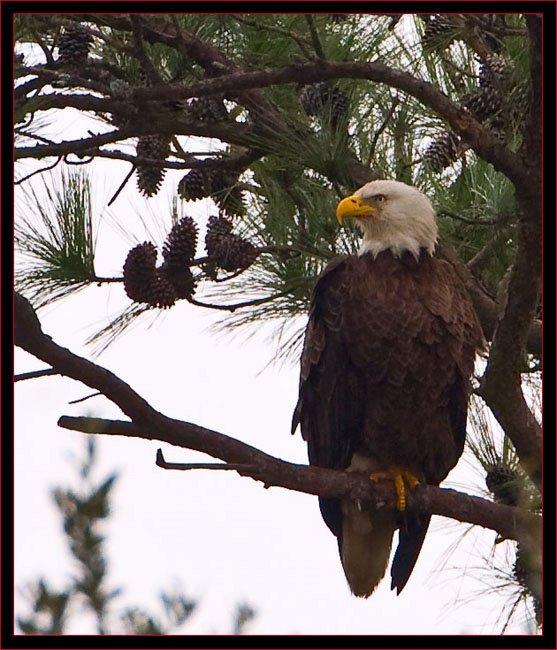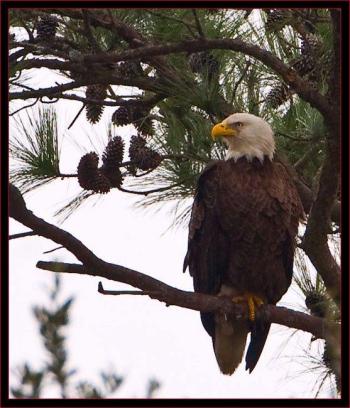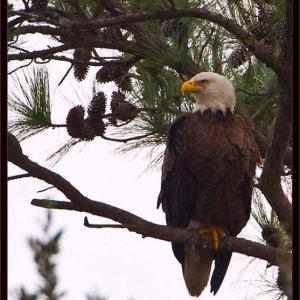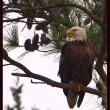Watching after Sandy
On the way to drop off our son at school the other day, we made the sad discovery that our favorite bald eagle nest had disappeared from its high perch atop a stately old pine tree. The winds of Hurricane Sandy had been too much for the limbs bearing the weight of a massive platform of sticks. Sitting right beside where the nest had been was an adult bald eagle. We imagined it feeling as shocked and dismayed as a person would be whose home was lost or damaged, though who knows what an eagle really experiences in such situations?
Now the bald eagle pair will need to build a new nest, here or somewhere else, in order to continue raising more young, as they had at the original nest for many years.
No doubt this one of many eagle and osprey pairs up and down the East Coast to have lost their nest. But at least in the case of this local eagle pair, the birds were still there. Hurricanes are famous for sweeping lots of birds up in their windy embrace and carrying them, sometimes thousands of miles, before the winds die down enough for the birds to land.
Given that hurricanes arise over the ocean, it’s probably no surprise that the birds that get caught in and displaced by hurricanes the most are seabirds. Birders know this. After hurricanes, we and our ilk often go out looking for these far-from-home oddities. Sometimes they end up hundreds of miles inland and will be seen on lakes or major rivers trying to locate food and find their way back.
We well remember seeing the small, dark swallow-like Wilson’s storm-petrels that flitted around on Cayuga Lake in upstate New York following the passage of a September hurricane. Wilson’s storm-petrels nest in the sub-Antarctic, spend the southern winter in our ocean waters, and normally never leave the sea. Imagine how confusing it would be to see land in all directions rather than the open ocean you were accustomed to.
Sometimes hurricanes and other big storms also blow migrating songbirds or other non-seabirds off course as well. Although here in Maine we didn’t see any major fall-outs of rare hurricane seabirds, birders in Maine did begin finding a number of cattle egrets around the state a few days after Hurricane Sandy had passed through. Others have been surprised to see certain migrants at their feeders that should have been farther south by now, like indigo bunting and rose-breasted grosbeak. It’s impossible to tell, but these all may be hurricane related.
Keep an eye out both in the waters and shore and also at your feeders to see what shows up. Keep a camera handy to document anything unusual. You might also take a moment to check in on your favorite bald eagle and osprey nests. While there’s little you can do to help them rebuild, if you find the nests survived just fine that’s sure to add a little comfort to your day.
Dr. Jeff Wells is the senior scientist for the Boreal Songbird Initiative. During his time at the famed Cornell Lab of Ornithology and as the Audubon Society's national bird conservation director, Dr. Wells earned a reputation as one of the nation's leading bird experts and conservation biologists. Jeff's grandfather, the late John Chase, was a columnist for the Boothbay Register for many years. Allison Childs Wells, also formerly of the Cornell Lab of Ornithology, is a widely published natural history writer and a senior director at the Natural Resources Council of Maine. Together, they have been writing and teaching people about birds for decades. The Maine natives are authors of the highly acclaimed book, “Maine's Favorite Birds.”
Event Date
Address
United States

























